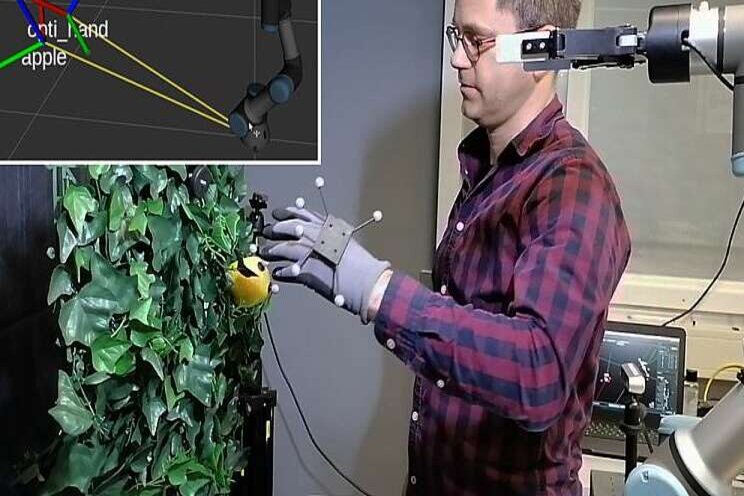How to teach a robot to pick a fruit?
Added on 05 July 2021

Artificial intelligence and machine learning methods have recently shown their large potential for data processing and reasoning. Wageningen University & Research strives to play a crucial role for enabling the digital transformation in the agro food and life sciences.
Human demonstrations teach robots how to perform
Currently, we work on data driven methods to learn robots how to perform a task, such as selective harvesting of a fruit, by human demonstration. Due to the natural variation in the scene it is not possible to program a fixed motion trajectory for the robot for such tasks. Instead, a human will demonstrate the task to the robot for different scenarios and for a limited number of repetitions. The motions of the human are recorded using a motion capturing (mocap) system.
In the training phase that follows, the full task is split into smaller parts, so called motion primitives. The required motion primitives are generalized and modelled using a probabilistic imitation learning framework. After the training is completed, the system has learned how to perform the task. From that moment on it can be used to calculate future motion trajectories for unseen scenarios and to control the physical robot arm. Future research on that topic will not only take the motion of the robotic arm into account, but will also incorporate the actuation of the robot gripper and data of sensors in the gripper (tactile sensing) in the learning process.
Working together on Agro Food Robotics?
Would you like to work together with experts of WUR Greenhouse Horticulture and Flower Bulbs Business Unit and with WUR Agro Food Robotics, developing robots? Contact us for more information regarding our projects and activities!
Source and Photo Courtesy of Wageningen University & Research
Source: Wageningen University & Research
More news















